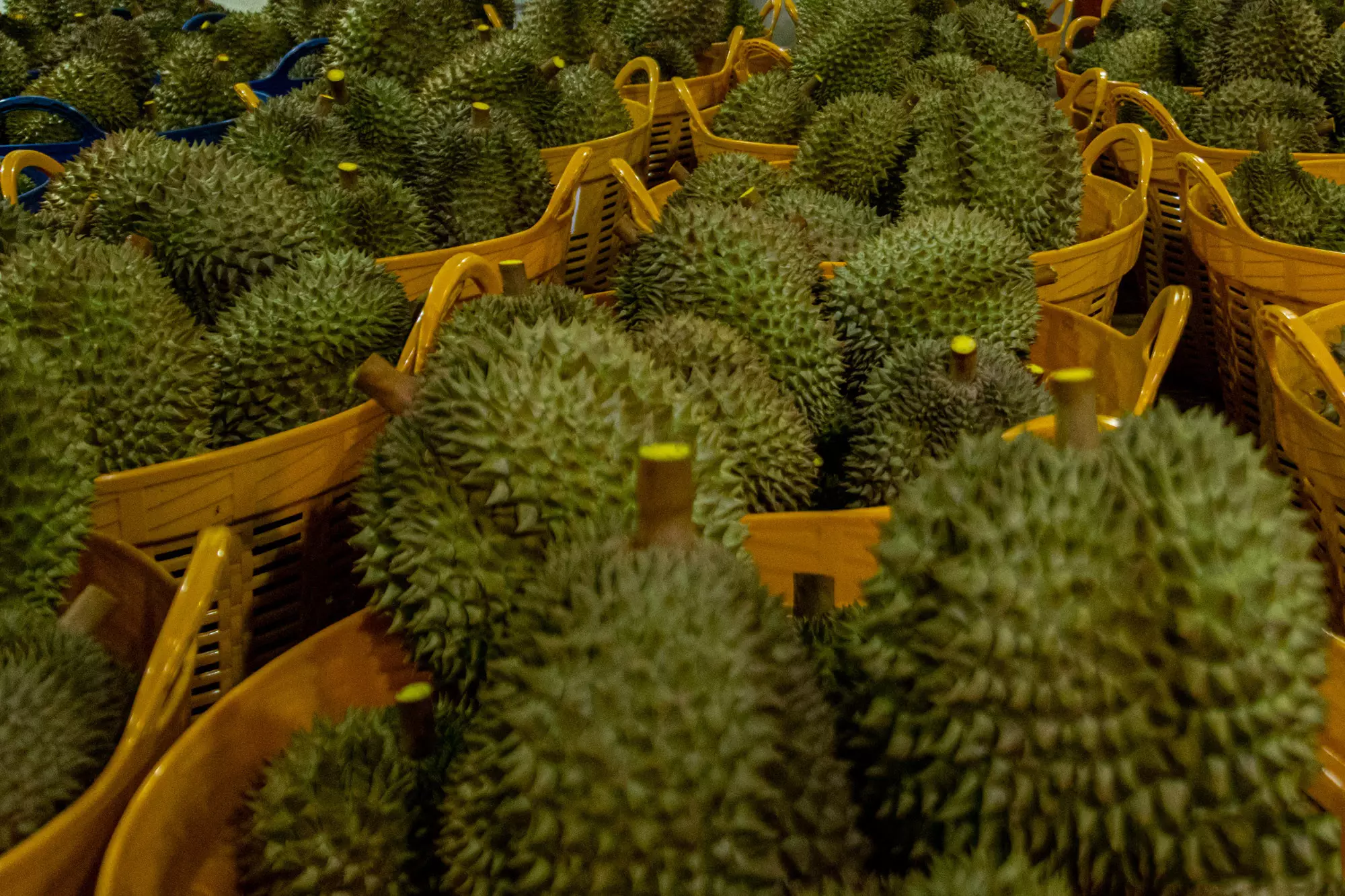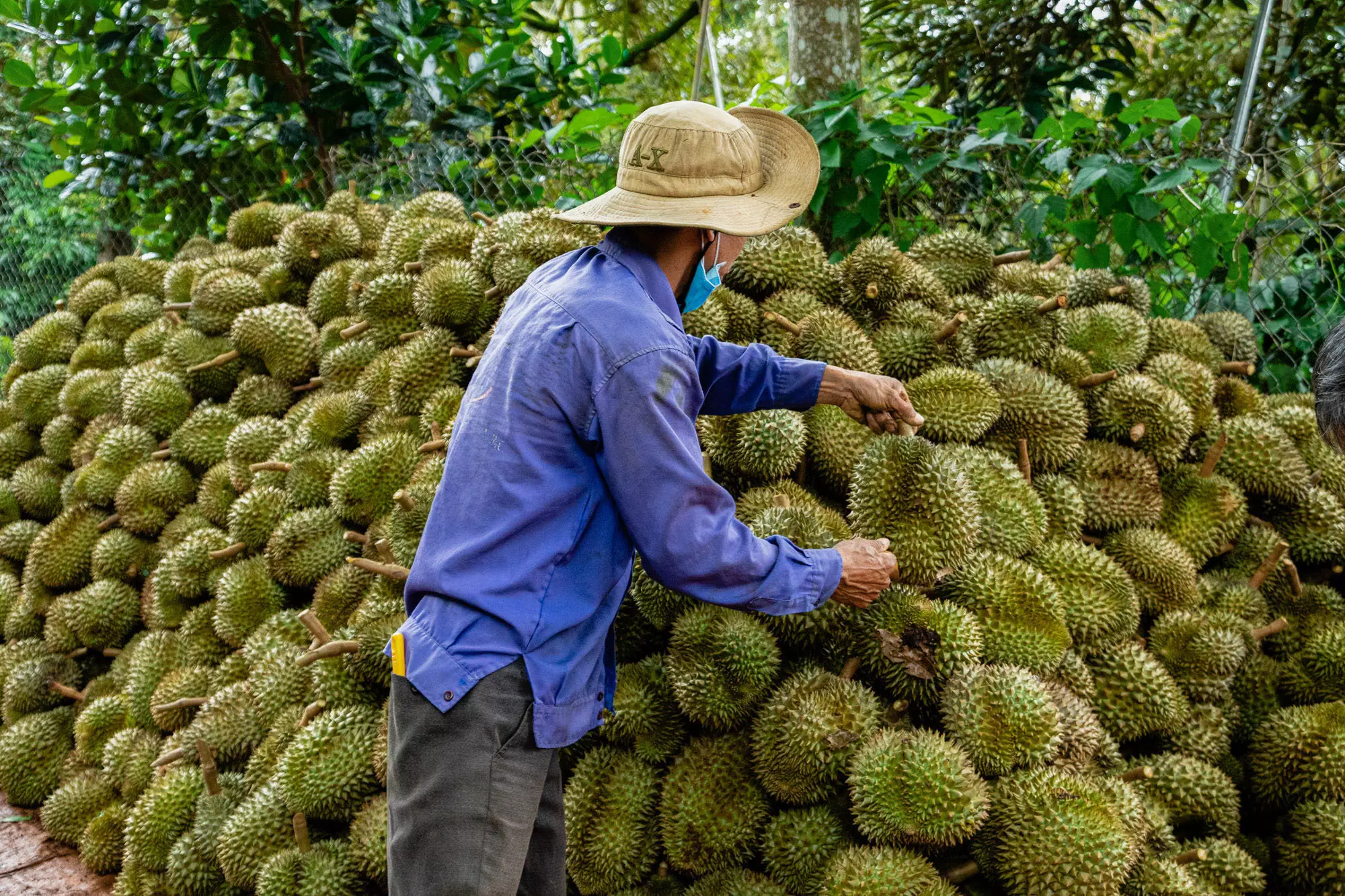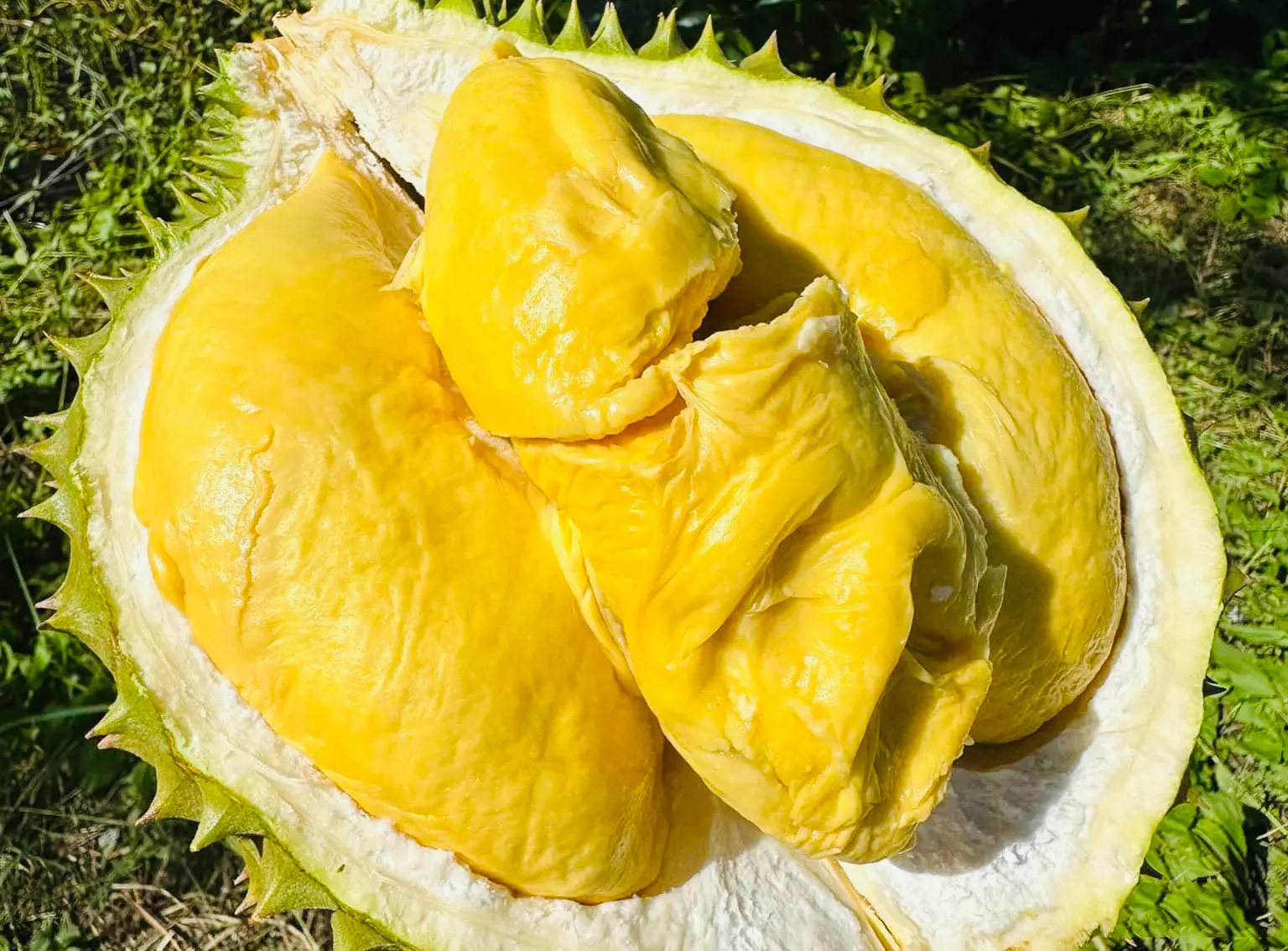China is the world’s largest durian consumer market with a forecast scale of 20 billion USD by 2025. This “pie” is being divided by four countries, in which Vietnam is considered to have an advantage over with competitors.
Racing to export durian to China
These days, in Cai Lay district (Tien Giang), members of Phu Quy Cooperative are busy harvesting off-season durians to sell at prices ranging from 97,000-125,000 VND/kg depending on the type.
“With the current selling price, on average, farmers can grow about 6-7 durians and earn billions,” said Mr. Luong Van Han – Chairman of the Board of Directors of Phu Quy Cooperative. According to him, durian has a sky-high price because official export to China is convenient. In the past few days, traders have been searching to buy durians at all garden houses in Tien Giang.

Mr. Doan Nguyen Duc, Chairman of the Board of Directors of Hoang Anh Gia Lai Joint Stock Company (HAGL), informed that his business recently sold about 440 tons of durian at a price of nearly 100,000 VND/kg, earning several tens of billions of VND.
“My durian buyers are all big customers in China. Recently, the harvest was small so I could only sell a few hundred tons,” Bau Duc shared.
Durian is a popular fruit grown in many countries in Southeast Asia. However, the main consumer market is still China.
In 2021, China’s fresh durian import value increased by 82.4%, to 4.205 billion USD, nearly 4 times higher than in 2017. Last year, the country also spent nearly 4.4 billion USD to import durians. private.
Despite spending such a huge amount of money, only about 10% of Chinese people can eat durian because of its expensive price. Experts say that in the next 10 years, China will still be the world’s largest durian consumption market, with a capacity that could reach 20 billion USD by 2025.
However, this durian “cake” is not only shared by Thailand and Vietnam. The Philippines will also be able to export fresh durian to China from January 2023, after having the protocol.
Malaysia also expects its fresh durian to be officially exported to China from 2024. A 6-point agreement related to durian was signed between the two countries last October. This country has exported frozen durian to China since 2017.
This shows that the race to export durian to the billion-people market will be even more fierce.
To maintain market share in the Chinese market, this year’s durian crop, Thailand decided to raise the minimum dry matter of durian; At the same time, open the Thailand – Laos – China railway transport route to bring durian to China as quickly and economically as possible.

However, among the four countries exporting durian to China, Vietnam has many advantages. Discuss with PV. VietNamNet, Mr. Dang Phuc Nguyen, General Secretary of the Vietnam Fruit and Vegetable Association, analyzed that transporting durian from growing areas in our country to China is close, taking only 1.5 days. Thanks to that, durian is guaranteed to be fresh and delicious, and shipping costs are cheaper than in Thailand (6-8 day shipping), Malaysia and the Philippines.
In terms of durian area, only Thailand and Vietnam are competitors. Malaysia and the Philippines have small areas and exported durian output is insignificant. Not to mention, Malaysia has the strength of ripe Musang King durian, so it is difficult to export fresh; Philippine durian productivity is very low, only 5 tons/ha, while Vietnamese durian productivity is 20-30 tons/ha.
Worth mentioning, durian in other countries is only available seasonally, while Vietnam harvests it all year round so there is always export. This is also the advantage of Vietnamese durian.
Has the “King of Vietnamese Fruits” become a common sorrow?
Having many outstanding advantages compared to competitors, Vietnam’s durian exports have grown dramatically, becoming our country’s new billion-dollar fruit. Tens of thousands of farmers became billionaires when the “king of Vietnamese fruits” was purchased at sky-high prices.
According to the Department of Crop Production (Ministry of Agriculture and Rural Development), the total durian area in 2023 in our country is estimated to be about 131,000 hectares, an increase of 20% compared to 2022. But only 51% of the durian area is harvested, with output reaching 1 million. ton.
Faced with the current hot increase in area, experts are concerned that in the next few years, durian will hit the market and may become a public nuisance.
In fact, the durian area is constantly expanding. For example, HAGL has 1,200 hectares of durian and plans to expand the area to 2,000 hectares.
Mr. Doan Nguyen Duc explained that durian will not be enough to meet demand in the next 10 years. This is a perennial plant, it takes 6-7 years to bear fruit and not every region can grow this plant.

Meanwhile, durian can currently be exported to the US and Europe in the form of frozen whole fruits and frozen segments. China is still the country that “eats” durian the most, other countries are just starting to learn about it, so he is confident that the market is getting bigger and bigger, even if planted throughout Vietnam, it would not be enough to sell, Mr. Duc emphasized.
Mr. Dang Phuc Nguyen also commented that in about ten years, Vietnamese durian will not have to worry about market problems. The problem of the durian industry today is building a brand and increasing recognition in the international market.
In China, consumers increasingly prefer branded products, while the Vietnamese durian brand is still lackluster. Thailand and Malaysia do very well in promoting their brands.
In addition, the rising price of durian leads to competition in buying and selling, with gardeners cutting young durian fruit, affecting the quality of durian. Therefore, it is necessary to improve quality and produce in a linked chain for this industry to develop sustainably and compete. If you don’t do well, you will lose the market.
“If done well, in the next 1-2 years, Vietnam’s durian turnover can catch up with Thailand,” Mr. Nguyen emphasized.
Ms. Phan Thi Tra My, President of the Provisional Vietnamese Business Association in China, noted that ensuring durian quality is the number 1 priority when exporting to China. In addition, businesses also need to build a brand for the product, then the value of the durian fruit will be many times higher.
“A Malaysian black thorn durian can sell for 1,000 USD. Brands bring higher economic value than mere ingredients,” Ms. My said.
Minister of Agriculture and Rural Development Le Minh Hoan further suggested that it is necessary to research durian varieties that suit the tastes of Chinese consumers. In addition to selling fresh fruit, we must consider exporting durian (shelled durian), which will be easier to transport.
Modified tapioca starch, Tapioca starch
